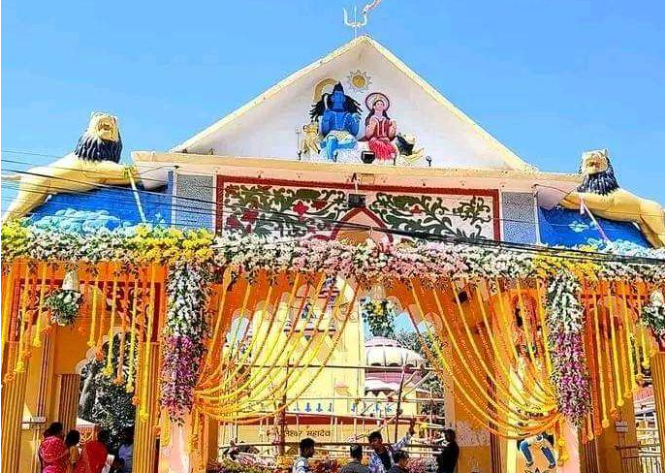The Jaleshwor Nath Temple, located in Jaleshwor Municipality-2, has witnessed a significant influx of devotees throughout the month of Shrawan, as believers hold the firm belief that Lord Shiva resides at the temple during this period. On the occasion of Monday’s festival, the temple was adorned like a bride, with elaborate decorations, lights, and floral garlands. The surrounding area resonated with devotional songs dedicated to Shiva, creating a vibrant atmosphere.
The Jaleshwor Nath Temple is renowned not only in Nepal but also in India, attracting thousands of devotees annually. This year, it is estimated that between 800,000 to 1 million pilgrims will visit the temple. The temple hosts special fairs during Maha Shivaratri and the first Monday of each month.
Despite its significant religious importance, there is no concrete evidence about the temple’s exact founding. According to inscriptions in the temple’s main cave, “Jaleshwaro Mahalinga Rudren Stapit Swyam,” it is believed that Lord Shiva himself established the temple.
Legend has it that the temple was constructed by Baba Jagdishnath with divine guidance from Lord Shiva. Due to the dangers of wild animals in the jungle, no workers were willing to build the temple, so Lord Shiva manifested the temple himself, as detailed in the Shiva Purana. Devotees believe that bathing in the Barun Sarovar, located directly in front of the temple, and visiting Jaleshwor Nath Mahadev leads to spiritual liberation.
In the past, various priests have served the temple, including Dwendra Giri, who dedicatedly worshipped Baba Jaleshwor Nath. The main priest of Jaleshwor Nath Mahadev, Upendra Pathak, shared that the temple’s water is 16 steps below ground level and remains perpetually filled. To view the Shiva Lingam, the water must be temporarily removed, a process that is challenging due to the temple’s unique structure.
Currently, the temple is facing operational difficulties. In 1867, King Girvan Yuddha Bikram Shah donated 275 bighas of land and four large ponds to support the temple’s activities. However, over time, the temple’s assets were misappropriated, leading to its weakened financial state. The lands and ponds, once crucial for the temple’s operations, were allegedly sold off during the era of Padma Shamsher, impacting the temple’s revenue and management.
In 1995, Badahakim Ram Shamsher reconstructed the temple, investing 25,000 rupees and using various materials like sakhhar (sugar), urid (black gram), and lime. Despite the reconstruction, the temple’s historical lands and ponds have been lost, with the Jaleshwor Municipality currently managing some of these assets. The temple now relies heavily on donations and contributions from devotees for its daily operations.
The Archaeological Department has inspected the temple several times but has yet to provide assistance for its restoration and maintenance. Jaleshwor Municipality’s Chief, Suresh Sah Sonar, has emphasized the need for a comprehensive plan and special efforts to preserve the temple’s heritage and functionality.






